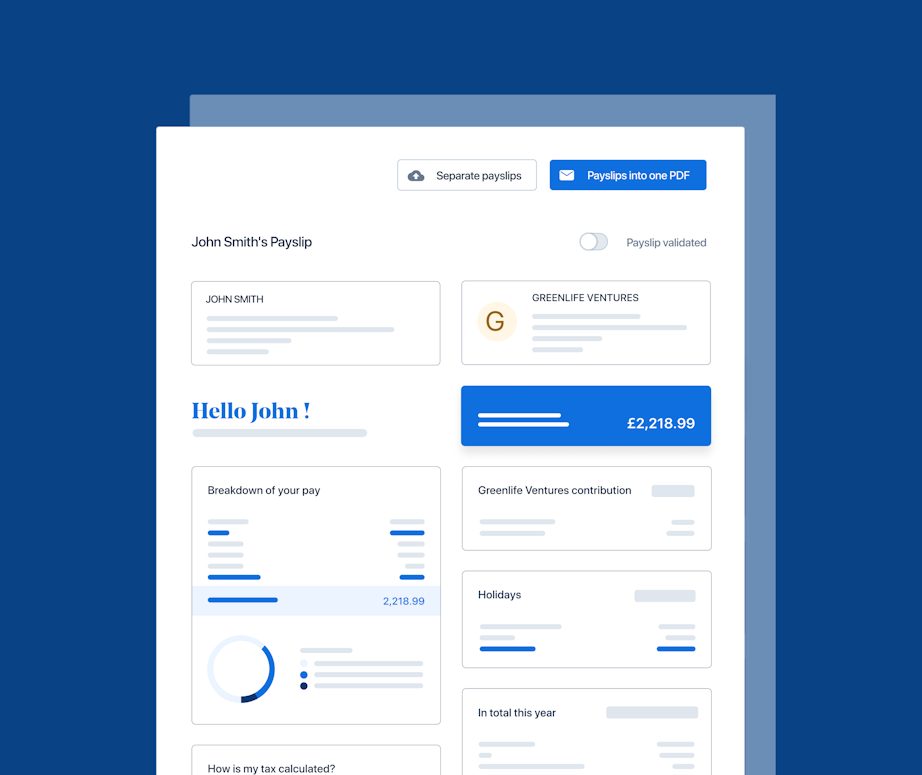What is a PAYE Settlement Agreement and What Does it Do?

A PAYE Settlement Agreement, otherwise referred to as a PSA, is a process that allows you, as an employer, to make one annual payment to cover tax and National Insurance contributions (NICs) on minor, irregular or impracticable expenses or benefits on behalf of your employees.
In this post, we’ll go over what a PAYE settlement agreement is and what you should include in it regarding expenses and benefits. We’ll also provide a PSA letter template you can use if you’re submitting your PSA by post.
Employers, read on!
How do you get a PAYE Settlement Agreement?
Employers can now apply for a PSA online on the gov.uk website. HMRC’s new online application system lets you describe the expenses and benefits you wish to include on your PSA. You can also post your form* to HMRC, though a less commonly used method as tax goes more and more digital.
Once you’ve submitted your PAYE settlement agreement form online, HMRC will check what’s included and will reach out if there are any issues. If your request is authorised, you’ll get a confirmation email or letter.
*If you’ve posted your form, then HMRC will send you two copies of the P626 form, which you’ll be required to sign and return. HMRC will then authorise the request and return a form, which will then act as the PSA.
For the 2019/20 tax year, HMRC reformatted the PSA process, ensuring that PSAs were automatically renewed year on year in what is known as an “enduring agreement”. Up until then, if you wanted to implement a PSA, you would need to apply annually before the beginning of the tax year.
If you have an enduring PAYE settlement agreement in place, then you only need to write to HMRC if you wish to amend any benefits on the PSA.
You can also cancel your PAYE settlement agreement anytime online. HMRC will send you an email or letter to confirm. If you’ve cancelled by post, you might get a P626 with the cancellation date, though you can expect a confirmation letter from HMRC in addition to this.
What is included in a PAYE Settlement Agreement?
There are three main types of PSA expenses or benefits you need to include on a PAYE settlement agreement: those that are minor, irregular or impractical. So, what do each of these mean? Let’s look at a few examples:
Minor benefits and expenses include things like incentive awards. These may be handed out to employees as a reward for their long service with an organisation.
Other items such as small gifts and vouchers also fall under this category, as well as telephone bills or staff entertainment—e.g. annual parties.
Irregular benefits and expenses relate to things that are not paid regularly throughout the course of a tax year. They are typically things that employees do not necessarily have a contractual right to—e.g. relocation expenses over £8,000, attendance at overseas events or the use of a company holiday venue.
Impracticable benefits and expenses refer to items or events with no fixed value. Examples would be personal care expenses, shared cars or special staff events.
What’s not included in a PAYE Settlement Agreement?
Companies cannot include cash payments such as wages and beneficial loans or high-value benefits such as company cars or company accommodation.
PSA letter template
If you’re submitting your PSA letter by post and wonder what it should look like, our PSA letter template will guide you on what to write and what to include.
When are the PAYE Settlement Agreement deadlines?
There are two separate PSA deadlines - one for submitting your application and the other for making your payment.
PSA application deadline
The PSA submission deadline is the 5th of July. Whether submitted online or by post, A PSA1 form must be submitted no later than this date following the end of the tax year in order to apply.
PAYE settlement payment deadline
The PSA payment deadline is the 22nd of October (or the 19th of October if you’re making your payment by cheque). Tax and NICs due under a PSA must be paid no later than this date for the tax year in question. You may be charged a late penalty fee if payment is late.
What to pay when the PAYE Settlement Agreement is approved?
If HMRC approves your PSA before the start of a tax year, you can include any expenses and benefits contained in the agreement.
If they approve it after the start of the tax year, you might need to report some items separately.
If your PAYE settlement is approved before the 6th of April
You must use form P11D to report expenses and benefits provided before the agreement date that you’ve:
already included in your employee’s tax code
included (or should have included) in your employee’s PAYE tax and National Insurance deductions
If your PSA is approved between the 6th of April and the 5th of July
You must use form P11D to report expenses and benefits provided during the tax year that you’ve:
already included in your employee’s tax code
included (or should have included) in your employee’s PAYE tax and National Insurance deductions
How can PayFit help?
If you are unsure about PAYE settlement agreements or just want to find out more about the benefits associated with using them, one of our payroll specialists is always available to offer a helping hand.
Book a call today to find out how PayFit can help optimise your payroll processes.
A PSA is an arrangement with HMRC that allows employers to make one annual payment to cover all tax and National Insurance contributions on minor, irregular, or impracticable expenses and benefits provided to employees. Instead of reporting these items individually on P11D forms, employers can streamline the process through a PSA. Learn more about benefits in kind and tax obligations for employers.
PSAs can cover minor benefits (like small gifts and vouchers), irregular benefits (such as relocation expenses over £8,000), and impracticable benefits (including shared cars or special staff events). However, they cannot include cash payments, wages, or high-value benefits like company cars. Discover more about employee benefits and expenses management.
You must submit your PSA application by 5th July following the end of the tax year. The payment deadline is 22nd October (or 19th October for cheque payments). Since 2019/20, PSAs automatically renew each year as an "enduring agreement," eliminating the need for annual applications. Find out more about important payroll deadlines throughout the tax year.
With a PSA in place, you don't need to report the included benefits and expenses on individual P11D forms. However, if your PSA is approved after the start of the tax year, some items may need to be reported separately. Understanding P11D forms and requirements is crucial for proper compliance.
P11D Forms Explained: A Guide For UK Employers In 2025
How Much Does an Employee Cost UK Employers in 2025?

Bank Holidays UK: Employment Law Guide 2025
UK Statutory Notice Periods - An Explainer For Businesses
What Is OTE? How UK Businesses Can Unlock Its Potential







